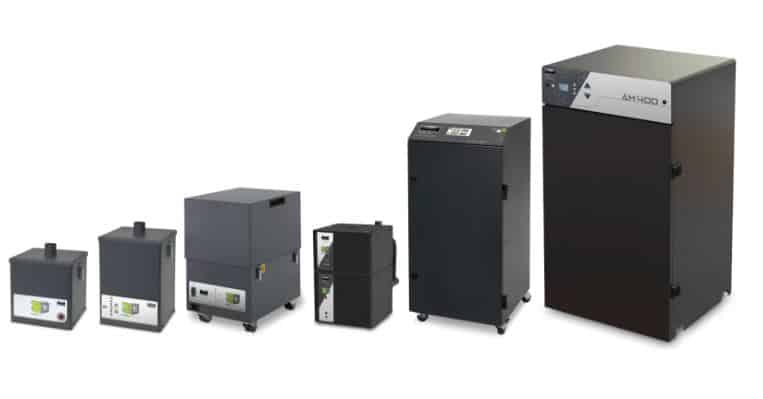From medical visors to components for spacecraft, 3D printing continues to transform our understanding of how things are made. Yet, there is relatively little authoritative industry insight into the by-products of additive manufacturing processes. Research undertaken by BOFA International, a leader in portable fume and dust filtration, underscores how filtration and atmosphere management technology can contribute positively to workplace environmental practices while helping drive productivity. It also provides insights of harmful impacts of 3D printing on health.
More from the News
BOFA helps manufacturers manage their 3D print environments using advanced filtration. The company’s range of portable filtration and atmosphere management systems are tailored to specific processes and provide multi-stage filtration of nanoparticles, particulate, fume and gases. This can help prevent potentially harmful airborne contaminants both entering the work environment and creating a build-up of debris on expensive equipment, which could potentially impact product quality.
“The term ‘3D printing’ covers many additive manufacturing processes but they share a need for effective removal of particulate and fume to help operators meet their obligations under Occupational Safety and Health Administration regulations,” said Katrina Clemens, General Manager, BOFA Americas, Inc.
“BOFA’s portable range of extraction units for this sector also helps filter print residue that would otherwise build-up on expensive machinery. In time, this debris could potentially degrade high-value components, affect product quality and impact productivity.”
BOFA has developed a range of solutions for the 3D printing sector, with filter technology and extraction performance matched to specific applications.
This technical paper considers the data and associated impact and control of 3D printing emissions. Two main additive manufacturing (AM) processes are examined: fused filament fabrication (FFF, sometimes referred to as fused deposition modelling (FDM)) and VAT polymerisation (VP; sub-groups of which are stereolithography (SLA) and digital light processing (DLP)). FFF and VP generate the highest number of printer sales. Their output accounts for approximately 50% of the total components produced in the AM industry (Associates, 2021). It is also considered that, given the available data and the growing process adoption and use, there is a strong requirement to ensure associated hazards are comprehensively mitigated by both users and employers.
BOFA’s industry research into 3D print emissions and harmful impacts of 3D printing on health can be downloaded by visiting https://bofainternational.com/en/3d-printing-emissions/
Subscribe to AM Chronicle Newsletter to stay connected: https://bit.ly/3fBZ1mP
Follow us on LinkedIn: https://bit.ly/3IjhrFq
Visit for more interesting content on additive manufacturing: https://amchronicle.com/


